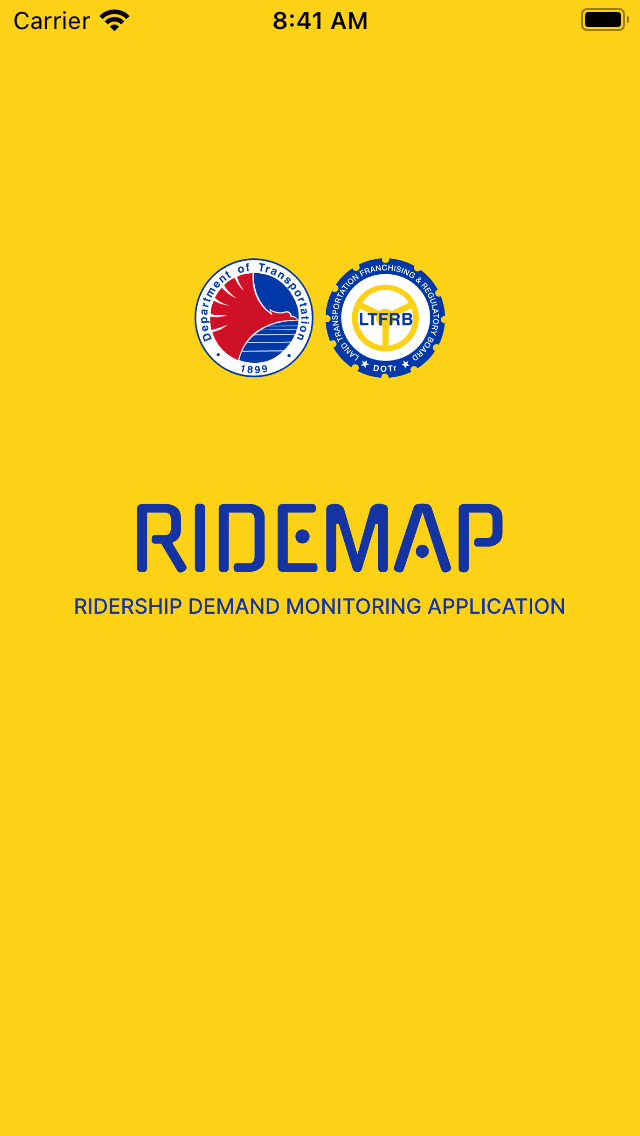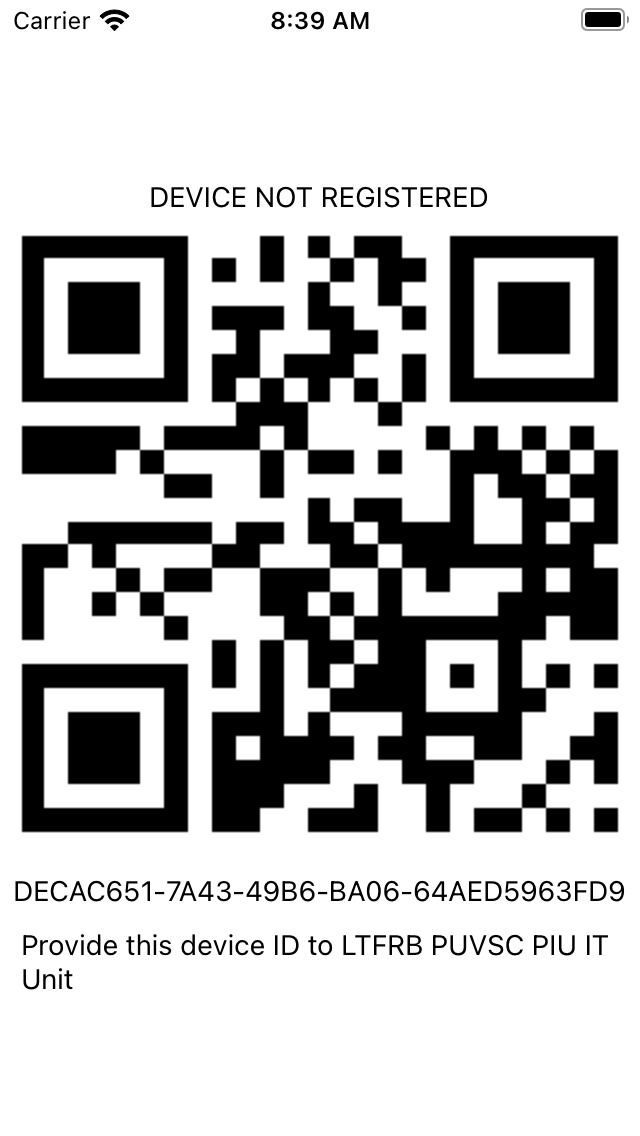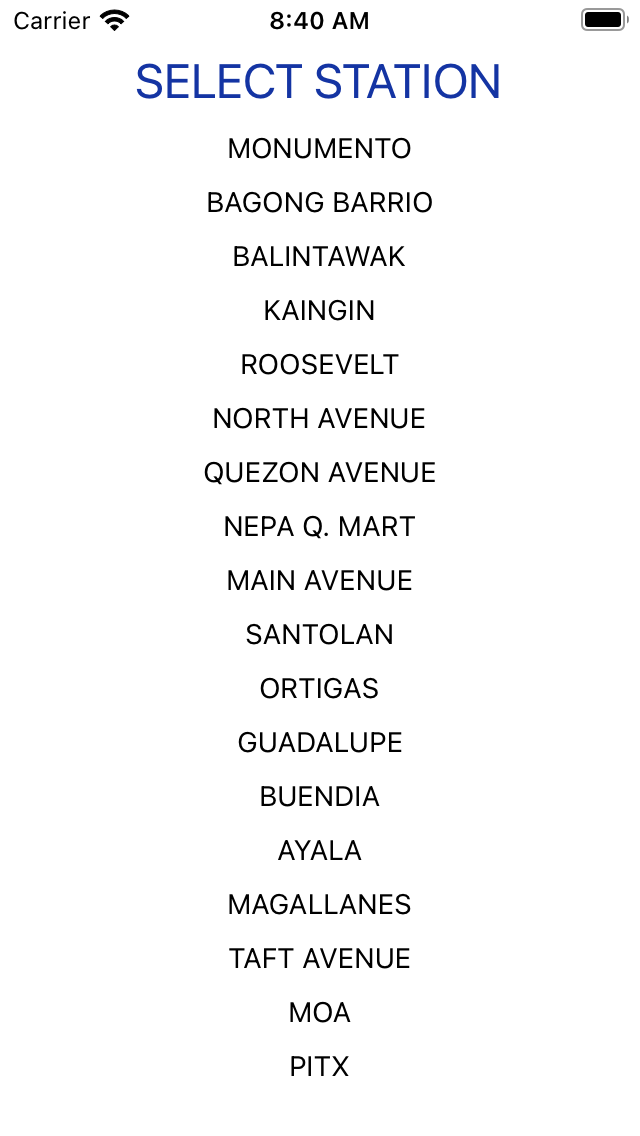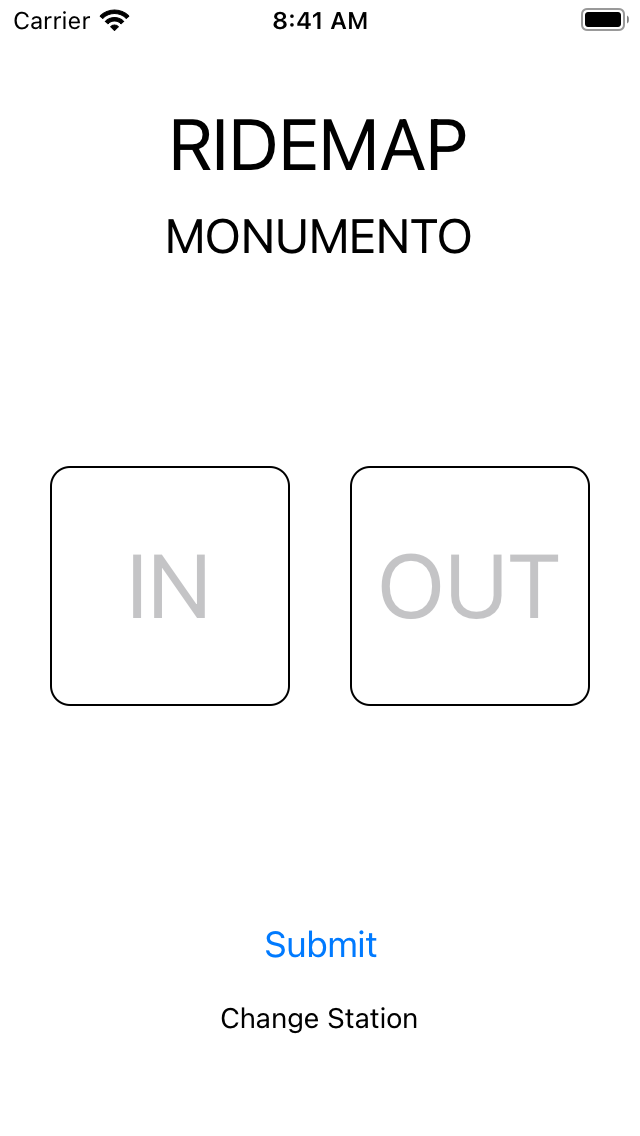This mobile app allows registered smartphones to collect data on number of passengers boarding and leaving vehicles in the different stations of EDSA Busway.
- Free Expo account
- React Native and Expo for mobile app development
- Smartphones with internet
The Laravel backend for the Ridemap
already supports this app. The endpoint for submission of face detection is /api/passenger-count.
The backend accepts a single input with the following attributes: station_id,
passenger_in, passenger_out, and scanned_at. user_id is extracted from
the token used to authenticate the device.
Since this app has been created with expo,
the app can also be built with it through the
Expo Application Services.
To do this make sure that eas-cli is installed in your
computer with npm i -g eas-cli. Then, in your app's root
directory, just run eas build and follow the instruction.
You can view the progress in expo.dev
website, i.e. dashboard. Afterwards, you can download the
app bundle which you can distribute to users or submit to
app / play store.
Important: Do not forget to update the api configuration in the
utils.js file to point to the url of the API of the backend. Specifically,
this line:
export const api = axios.create({
baseURL: 'https://ridemap-php.herokuapp.com/api'
})To use this app, devices must be registered in the server. To do this, follow the instructions below:
- Download the app
- Open the app to connect to the server for the first time
- The app will show an invalid device message along with the device ID. Use this device ID to register the device in the server.
Note: The device ID does not refer to the actual device ID of the device but rather the device ID of the app tied to the server. This is unique for every app that is installed in the device.
Read more here: Android and iOS
Install the necessary tools:
- Any IDE (Webstorm is preferred but you can also use Atom and VS Code)
- Install Nodejs
- Install Expo
- Install Expo Go in IOS/Android
- Install Git
Follow the following steps to get set up:
- Clone this repository
git clone https://github.com/mlab817/ridemap-counter.git- Change directory to ridemap-counter
cd ridemap-counter- Install dependencies
npm install- Update the API endpoint in utils.js file
export const api = axios.create({
baseURL: 'https://ridemap-php.herokuapp.com/api'
})- Start expo dev server
expo startOr
expo r -cThe second command is used when you cannot connect your device to the webserver.
Follow the instructions in the CLI message to connect your simulator or physical device.
To build the app, install the Expo Application Services.
- Create a free account in Expo.
- Install eas-cli to use eas in command prompt and/or terminal.
npm i -g eas-cli- From the root directory, run:
eas buildFollow the on-screen instructions. You will find the android/ios bundles in your Expo account under Build menu, e.g. https://expo.dev/accounts/{accountName}/projects/ridemap-counter/builds. You may also integrate submission to Play Store and App Store.
Note: Unfortunately, to build IOS applications, you will need to apply and register to Apple Developer Program which costs $99 yearly. Android build is free and can be downloaded for distribution.
- Open app
- Device connects to server
- Server verifies that device is registered
- If device is not registered, display invalid device message along with the device ID. Note that the device ID is not the actual device ID but rather the ID of the device tied with the app.
- If device is registered, proceed
- Prompt user to select station where it is located
- Input passenger in and out
- Press submit
After succesful submission, the form will be reset and the user can immediately input the next passenger count.
Stores data of users of the system
| Attribute | Type | Description |
|---|---|---|
| id | int autoincrement | Primary key of the table |
| name | varchar | Name of the user |
| varchar | Email of the user | |
| email_verified_at | timestamp | Timestamp when the user validated their email |
| password | varchar | Hashed password of the user |
| device_id | varchar | Device ID of the user |
| created_at | timestamp | Timestamp when the record was saved in the database |
| updated_at | timestamp | Timestamp when the record was updated in the database |
Stores data of stations in EDSA Busway
| Attribute | Type | Description |
|---|---|---|
| id | int autoincrement | Primary key of the table |
| name | varchar | Name of the station |
| created_at | timestamp | Timestamp when the record was saved in the database |
| updated_at | timestamp | Timestamp when the record was updated in the database |
Stores data on scanned QR codes
| Attribute | Type | Description |
|---|---|---|
| id | int autoincrement | Primary key of the table |
| station_id | int | Foreign key referencing stations table |
| passenger_in | int | Count of passengers entering the vehicle |
| passenger_out | int | Count of passengers leaving the vehicle |
| scanned_at | timestamp | Timestamp when the entry was generated |
| user_id | int | Foreign key referencing users table (user that submitted the data) |
| created_at | timestamp | Timestamp when the record was saved in the database |
| updated_at | timestamp | Timestamp when the record was updated in the database |
 |
 |
|---|---|
 |
 |
- Screen 1 - Splash screen
- Screen 2 - QR Code for the Device ID which can be scanned to easily copy the device ID
- Screen 3 - Select station where device is located
- Screen 4 - Input data on passenger entering vehicles and leaving vehicles and submit
This mobile app is developed by Mark Lester Bolotaolo.
